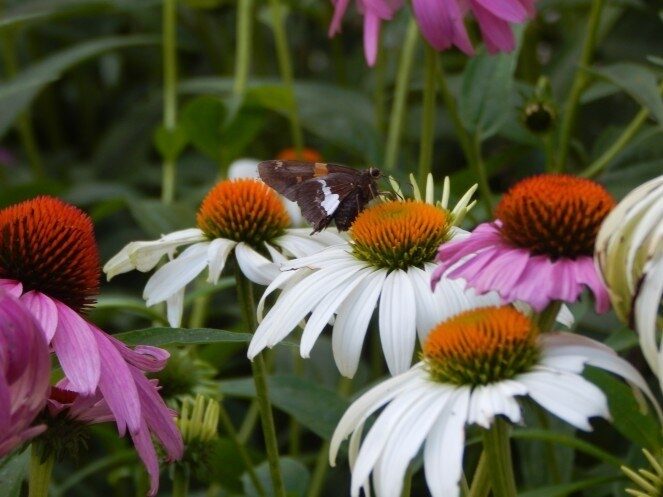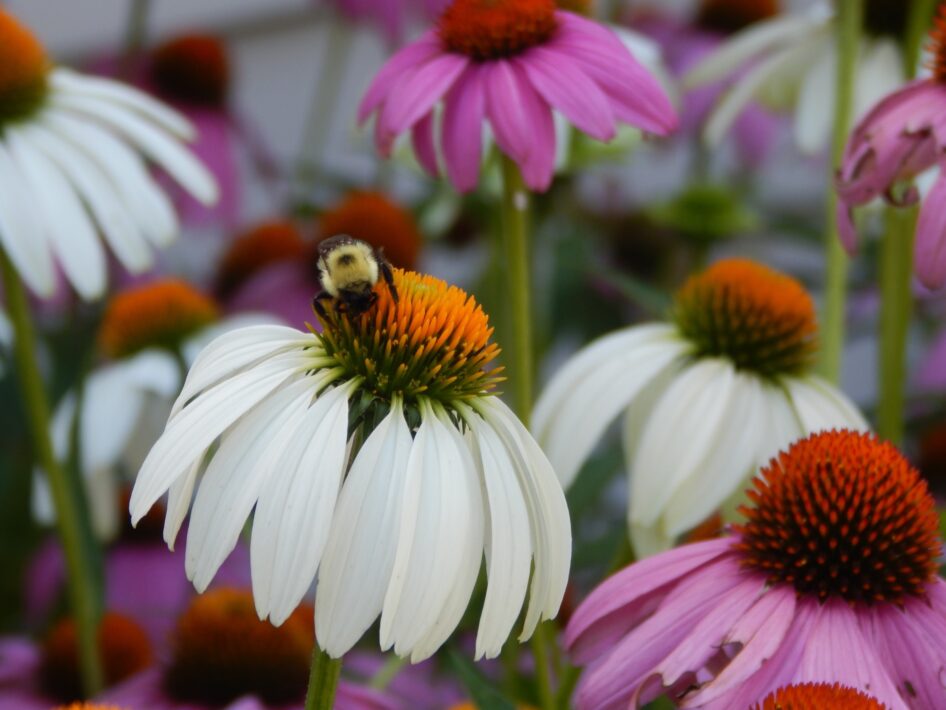Silver-spotted Skipper: Chesapeake Bay watershed Pollinator

Pollinators may look tiny, but they have a crucial role to play. Not all plants require pollination, some can self-pollinate or use natural phenomena like wind and rain to spread their pollen. Others require help from pollinator species. Some pollinators species include bees, birds, butterflies, moths, flies, bats, beetles, small mammals and rodents. All of these pollinators provide valuable contributions to the environment and the ecosystems around them. We need pollinator species to help grow the food we eat and to bring plenty of biodiversity! One pollinator native to the Chesapeake Bay Watershed is the Silver-spotted Skipper.
Silver-spotted Skipper native to the Chesapeake Bay watershed
The Silver-spotted Skipper is one of the most recognized and widespread skippers in North America. Skippers are categorized under the family, Hesperiidae and classified under the order Lepidoptera, which comprises insects—both butterflies and moths. The Silver-spotted Skipper habitat includes open woods, fields, gardens, forest edges, as well as urban settings. They can be found throughout the U.S., east coast, northern Mexico and parts of southern Canada. They are common all throughout Maryland and the Chesapeake Bay region. The Silver-spotted Skipper is often overlooked, but remains a valuable asset to the ecosystem and Chesapeake Bay watershed-along with other species of pollinators.
The Silver-spotted Skipper has a prominent silver spot located in the middle on the underside of each hind wing. Their flight period extends from late April to September. This species is often spotted alone and not in a group.
Fun facts about the Silver-spotted Skipper
The Silver-spotted Skipper is two in one! The family of insects called Skippers are an intermediate between a butterfly and a moth present throughout the Chesapeake Bay region. They are classified under the Spread-winged Skippers group, having characteristics of both the moth and butterfly. Silver-spotted Skippers have a moth-like physique but are active during the day like butterflies. The antennas of Skippers are curved at the tip. Their coloring is mostly dark brown, and spots of orange-yellow with a white—silver spot located underneath on both hind wings—similar to a birthmark. This signature marking helps identify them apart from other skipper butterflies. If you observe a Skipper close enough in the wild you might see it “skipping” from flower to flower. They thrive in meadows, suburban areas, roadsides, and near streams. The Silver-spotted skipper larvae, or caterpillar, create leaf shelters by folding a flap of the leaf or cutting a part of the leaf to hide underneath and create a protective barrier.
Actions to Take
You can plant native plants, trees and perennials in a sunny location in your yard or garden to help attract Silver-spotted Skippers. Some of these host plants include Iron weed, Joe-pye weed, and Butterflyweed or Common Milkweed, which are usually visited by Silver-spotted skipper butterflies and other pollinators. Some larval host plants which provide habitat to lay eggs and habitat for caterpillars include, locust plants—Black locust and Honey locust, False indigo bush, Wisteria, and legume plants. The adult butterflies will feed from the Common milkweed, red clover thistles, blue mealy sage, and zinnias. These are great plants to grow in your schoolyard or garden to attract an assortment of beautiful pollinators! Butterflies and skippers are also an important indicator to the health of the environment and the Chesapeake Bay. Learn more about other native plants by exploring the Plants & Trees Field Guide from the Chesapeake Bay Program.
Be a part of the change in bringing pollinators to your garden and providing habitat for these precious species. Bring out the ‘wild’ side of your garden by letting it grow naturally.
Try to limit the chemicals you apply on your schoolground or yard, as these chemicals can be harmful to pollinators. Allow your lawn and garden to be less manicured—this enables pollinators and other animals to thrive, which brings more biodiversity in a micro-ecosystem. Try to incorporate rain barrels, composting, or natural fertilizer and mulch around your home or schoolground to help make it more eco-friendly.
We must continue to help protect pollinators since they provide many important ecological benefits and services. Check out the additional resources below to learn more about the vital benefits of pollinators and ways you can help make your garden and yard sustainable. Pollinators are significant to the environment and we truly depend on them.

Additional Resources
- Bees and Pollinators Activity
- Plants in the Schoolyard
- Tips for Creating a Butterfly Habitat
- Choosing Native Plants
- Action Project: Chesapeake Region Native Plants
- Monarchs in the Classroom
- More Habitat Project How-To's: Excellent State-Specific Resources
About the author: Carly Sniffen is an Interpretive Outreach Specialist for the Communications Department of the Chesapeake Conservancy.
